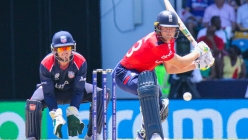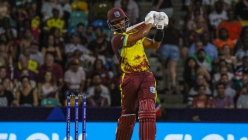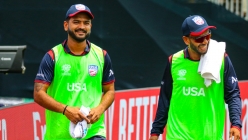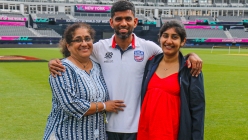Views
USA Cricket: 2020 CWC League 2 Nepal ODI tri-series Tour Report Card Part 3 – Outlook for 2020 Florida ODIs
2020 Feb 19 by DreamCricket USA
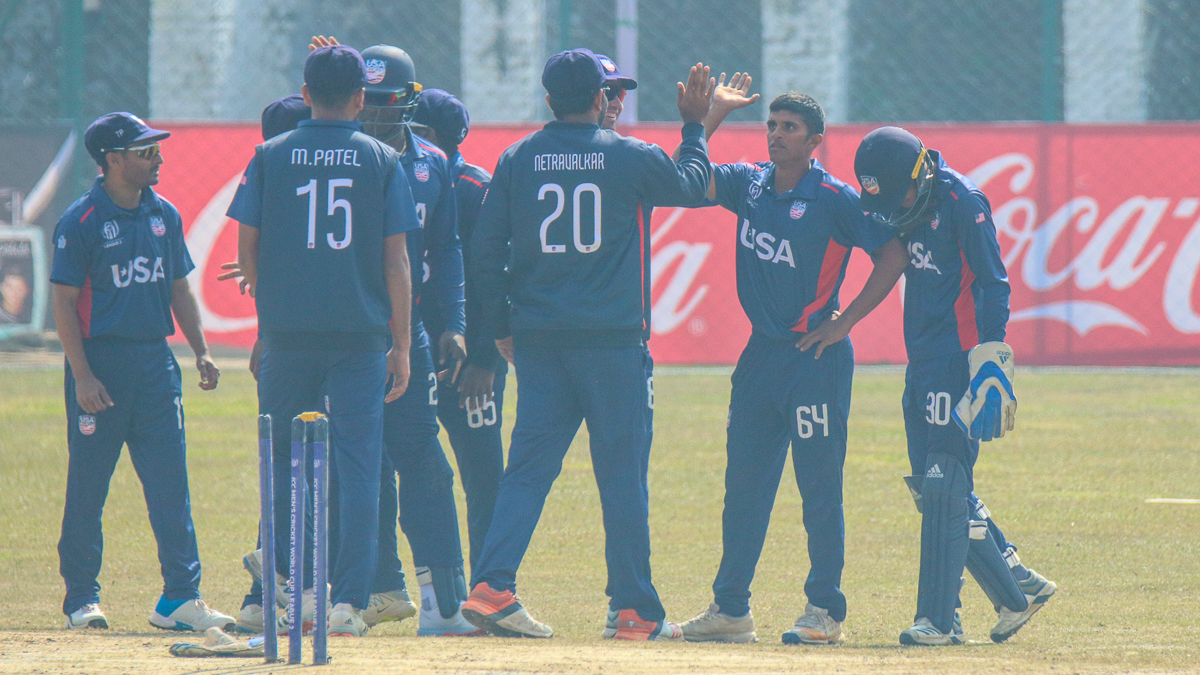
By Peter Della Penna (Twitter @PeterDellaPenna)Photo credit: Peter Della Penna
In the final part of the DreamCricket review of USA's winless ODI tour of Nepal, a series of recommendations are laid out to rectify some of the systemic issues plaguing the national team which have led to inconsistent performances over the last six months.
1 – Take accountability
First and foremost this relates to the USA national team's pay and compensation structure for players. One of the biggest mistakes USA Cricket and their commercial partner ACE made was grossly overpaying USA players in the first wave of central contracts issued in August.
According to a USA Cricket press release from August, USA players who received top-tier contracts would be compensated in excess of $90,000. This is a total that is higher than the six other Associates in Cricket World Cup League Two as well as the Netherlands in the 13-team ODI Super League. According to sources in multiple other countries here’s what the pay scale is like at the low and high end for central contracts
Scotland: Low end GBP 10,000 ($13,000), high end GBP 25,000 ($32,000), not including match fees.
Netherlands: High end appx 40,000 euros ($43,000), which includes match fees.
UAE: Low end AED 72,000 ($19,500), high end AED 126,000 ($34,000), not including match fees.
Namibia, Papua New Guinea and Nepal players are believed to be compensated well below even those figures based on local cost of living and the ICC funding budgets allocated to the respective countries, which is nowhere close to the revenue USA has. Oman's players are part-time cricketers whose compensation is mostly tied to their corporate jobs which are connected to the teams they represent in Oman's domestic premier division played in Muscat. Again, it is well below the compensation level of USA players' pay packets. Some USA players are even paid higher than those in a few Test nations like Ireland and Zimbabwe. Similarly, the pay is vastly higher than what the handful of USA players (Steven Taylor, Aaron Jones, Hayden Walsh Jr.) received when they had been part of the CWI franchise system, which is ostensibly a higher standard of cricket than playing for USA.
CWI first-class contracts (as of 2018-19): Low end $18,000, high end $30,000, not including match fees.
In the context of other Associate country central contract wage scales while also keeping in mind the general cost of living for certain parts of the USA, the initial amounts that had been discussed by Pubudu Dassanayake in 2018 for potential central contracts for USA players ranged between $20,000 at the low end up to $60,000 at the high end. This seemed reasonable, along with the expectation that players on the lower end might need to maintain some form of part-time work in between tours to supplement their pay just like Associate players in other countries do.
Instead, sources have indicated that the contracts that were handed out actually began in the $50,000-$60,000 range and went up to between $90,000-$100,000 or more. Based on the words of James Pamment in his final press conference in Nepal, this money was handed out to players who had no structure in place in between tours barring a strength and conditioning fitness plan distributed by S & C coach Burt Cockley, a plan that apparently several players don’t bother to follow.
“From series to series, they just go back to their home base and don’t do any work,” Pamment said. “The facilities are not there for them. The coaching is not there for them.”
There are no structured training sessions in between tours, meaning players are essentially left to their own devices. Similarly, there does not appear to have been anything else worked into the contract in between tours to make players earn money, such as coaching at local academies. Rusty Theron is believed to have been stipulated to do that as part of moving out to San Francisco to coach at Willow Cricket Academy, but few if any players in the current USA setup do any coaching locally around the USA. And few if any of them have actually even bothered to attend a coaching accreditation course to even be licensed or certified for formal coaching.
The other curious decision taken when handing out contracts is that the powers that be allegedly handed out certain contracts on an inflated pay scale in an attempt to match or come close to matching what players were earning in their jobs working in other professional fields in an effort to lure them to cricket full-time. Essentially this means that if a player is earning six figures in an IT or finance job, USA officials were allegedly willing to offer the same compensation to play cricket rather than setting a national team central contract budget in line with other Associates, something that would have forced many players to take a pay cut. If the players are pursuing their true passion of cricket, perhaps that is worth the sacrifice of a short-term pay cut, something that could be recouped later in the form of performance bonuses as well as attracting the attention of T20 franchises to supplement their pay with short-term franchise T20 contracts.
The result is an overpaid national team without access to many of the infrastructure resources available to lesser-paid Associate teams who have outperformed them. Despite the players being paid double, triple, quadruple or even more than that compared to their opponents, the coach claimed the players are not professional. There are two ways to correct this: severely lower their base pay (and risk angering the players even more after having established a baseline precedent for central contracts worth vastly more than their Associate peers) or embrace the fact that they are professional with regards to accountability in their pay scale and that there are consequences for not taking the personal responsibility to train ahead and show up prepared to play. That may mean losing contracts for underperformance, something that according to sources has already happened to several players in the last six months since the contracts are not fully guaranteed by USA Cricket/ACE.
2 – Stop blaming the media
One of coach Pamment’s other issues was that he was unhappy with media scrutiny in the wake of USA’s poor results on tour. While he was partially critical of his own players for their role in the publicized drinking incident ahead of the final ODI against Scotland in the UAE in December, an incident which cost Steven Taylor the USA vice-captaincy, Pamment did not hesitate to blame people in the media (specifically the author of this piece) for having the audacity to report on it. His first issue again goes back to conveniently claiming that the players are not professional enough to process seeing this information reported in public. Again, it smacks of a complete lack of accountability.
More worrisome was Pamment’s continued tangent about players struggling to deal with “lies and innuendo” he insinuated had been reported about the incident. Despite having had numerous attempts before, during and after the media reporting of the incident, including in the final Nepal press conference in which he complained about “lies and innuendo” being spread, Pamment has never once sought to clarify which lies and innuendo he is referring to. He had a perfect opportunity to set the record straight. Instead, his vague and unspecific assertions arguably served to do the very thing he claimed to be railing against.
Of all the seven teams in the ICC CWC League Two ODI competition, USA is the only one to have players and coaches repeatedly complain about the level of media coverage and scrutiny they receive. In several instances over the past year, USA players and officials have repeatedly turned down interview requests and opportunities during tours, which is quite bizarre when considering that they have never had more than two beat writers covering them on any given tour. In contrast, Cricket Association of Nepal issued 135 media credentials for this recent home ODI series, more than 130 of them to local journalists. Yet none of Nepal’s players or coaches were complaining about the level of scrutiny or coverage they were receiving.
This is not specifically a James Pamment issue either, and not remotely limited to the recent Nepal tour. Robin Singh notoriously avoided the majority of media interactions during his tenure as USA head coach from 2011-2014. USA players and management under the regime led by Pubudu Dassanayake and assisted on tour by administrator Wade Edwards took an extremely adversarial stance towards media at both 2018 WCL Division Three in Oman and 2019 WCL Division Two in Namibia, refusing the overwhelming majority of interview requests. Acting head coach Sunil Joshi also avoided media interactions during USA’s failure on tour in Bermuda at the 2019 ICC Americas T20 Qualifier Regional Final.
Complaining about the media is a strange position for USA players and officials to be taking if they want to fulfill a long stated aim of making the sport a mainstream American pursuit in which children across the country can grow up envisioning a professional future for themselves. Like other issues that have been affecting the USA squad, deflecting blame elsewhere only demonstrates a further lack of accountability which has been an overarching theme of USA’s collective issues stretching back to the T20 failure in Bermuda last August. It also hints at a group of players who are easily distracted and lack an ability to focus on the task at hand, a trait that can be easily exploited by any opponent.
3 – Have some self-awareness
Following up the pay packet topic in its relation to accountability, the word “professional” or a variation of it was included seven times in an August press release by USA Cricket hyping up how much money was being invested first in player compensation (central contracts in excess of $90,000 according to the press release) but also in surrounding the players with an increasing number of coaching and support staff (Kiran More, Kieran Powell, Pravin Amre, David Saker, Sunil Joshi, James Pamment all as technical coaches, not to mention physiotherapist Jason Pilgrim, strength & conditioning coach Burt Cockley, video/scouting analyst Jamie Paul Lloyd) to get the national team ready for the T20 World Cup Qualifier. Again, the design and allocation and staff resources seemed misplaced by virtue of the team’s performance coming in third in Bermuda at the Americas T20 Qualifier Regional Final after having had a three-week training camp in Los Angeles.
Prior to the ODI tour of Nepal, USA organized a weeklong warm-up tour in Mumbai which included three warm-up matches, followed by a fourth warm-up match when the team arrived in Nepal prior to their first ODI. Despite all that preparation, which is virtually unprecedented for any Associate when it comes to an ODI series, USA lost all four ODIs. Pamment suddenly bemoaned the lack of preparation, saying he had only been re-contracted ten days before.
Oman meanwhile, whose players all have full-time corporate jobs that they have to report to daily – though yes their bosses do offer flexibility for them to leave early in the afternoon to go to national team training sessions in Muscat – showed up without any warm-up match practice having landed in Kathmandu less than 24 hours before the first ODI against Nepal on February 5. They won that, then showed up a day later to beat USA as well before going on to sweep their final two ODIs in an unbeaten tour. Similarly, Nepal’s players have gone unpaid for the best part of 12 months while Cricket Association of Nepal was suspended just prior to their recent reinstatement by the ICC. And yet the Nepal players showed up 100% committed and ready for action. Pamment’s words about USA’s lack of preparation and professionalism (at least in terms of players being paid) ring hollow in this context.
As for the end of the tour, it appears that the embarrassment of going winless in Nepal didn’t seem to register with everyone. Less than 24 hours after USA got their brains beat in to the tune of 35 all out, Nisarg Patel was proudly posting on social media to celebrate his feat of scoring USA’s fastest ODI 50 (which had come in a separate 92-run loss a day before USA was bowled out for 35), followed by no less than nine hashtags, several of them promoting apparel or sponsorship for cricket gear. The post appeared extremely tone-deaf in the same manner as some of Pamment’s comments.
The bottom line is that USA players and management seem to conveniently pick and choose when they want to characterize themselves as being “professional”. It’s time to embrace it fully, and that means taking the good with the bad. If players want to be paid more and have all sorts of increased investment to support them, whether it is coaching staff or prep camps and more, be prepared for a higher level of accountability and scrutiny from fans, media and administrators when it comes to results. That also means behaving professionally off the field too, i.e. not showing up to team meetings “half-pissed”, among other professional obligations.
4 – Bring in players with strong work ethic and hustle
If USA management wants to address the “team culture” problems hinted at by James Pamment and Saurabh Netravalkar at the end of the Nepal ODI tour, then there have to be consequences for players who have demonstrated little regard for on and off field discipline, nor respect team rules. Those things have clearly had a knock-on effect to their teammates and overall team results. Consistent underperformance also needs to have consequences in a healthy professional culture.
It’s time to bring in or bring back some players who are going to put healthy competitive pressure on others around the national squad setup by outworking and outhustling everyone else. Pamment touched on the fact that there is a lack of competition for places to put pressure on players within the squad to maintain a certain standard necessary when the time comes to take the field. That is both real and imagined. There might appear to be a lack of competition, mainly because USA administrators have repeatedly failed to follow through on promises to reinstitute a domestic national tournament for the last three years. But that doesn’t mean that there aren’t players capable of stepping in now as convenient replacements. Here are five worthy candidates:
Fahad Babar – The 28-year-old has one of the highest rates of 50-plus scores per innings for any USA player. He was their best batsman in 2015-16 when he was opening the batting next to – and regularly outscoring – Steven Taylor, but after a series of injuries he was seemingly written off by Pubudu Dassanayake despite producing one of the best innings at USA’s summer 2018 national team trials in Texas. He is currently embarking on an opportunity to participate with the extended training squad PSL franchise Lahore Qalandars.
Some coaches have maligned Babar for a loose technique, but his is no worse than what was on display in Nepal. The one characteristic that Babar possesses which no coach seems willing to recognize is that Babar puts a higher price on his wicket than anyone in the USA domestic scene. He is a gritty fighter who steadfastly refuses to get out while grinding out runs, whether at the top of the order or lower down taking on spin bowling, just the kind of trait that USA was sorely missing in Nepal. Babar isn’t perfect, but you’d want him fighting next to you in the trenches.
David Wakefield – The New Zealand-based US citizen was hastily written off by Dassanayake after just three innings at the 2018 Super50 in Barbados, especially once Dassanayake’s eyes lit up at the sight of Aaron Jones and Hayden Walsh Jr. Wakefield would automatically raise USA’s fielding standards which have tailed off since Walsh Jr. moved on to the West Indies. The 25-year-old was a menace in the field in limited opportunities for USA, whether in the ring or on the boundary with a rifle of an arm.
As for his batting, he is in excellent form. An innings of 103 opening the batting for his Christchurch Premier Division Grade side Old Boys Collegians at the start of the month earned him a recall to Canterbury A. He then promptly scored an unbeaten 100 in a three-day match against Auckland A. USA could do worse than give him another opportunity to shore up their woes at the top of the order.
Savan Patel – The 26-year-old left-hander has been churning out runs in club cricket in New Jersey the last few summers. Having represented the Atlantic Region in the last year of USACA National Championships in 2015, Savan finished as the top-scorer in the premier division of the Cricket League of New Jersey in 2018 playing for Somerset Cavaliers (the same club as Xavier Marshall) and went a step higher in 2019 for Berbice Royals in the Garden State Cricket League, stroking an unbeaten 190 in August.
Savan recorded some of the highest fitness scores in the nation during the 2018 USA Cricket Regional Combines, allegedly producing a time of 6:30 in the 2K run. That is partly a consequence of his background as a middle-distance track & field runner as well as a member of the varsity baseball team at Parsippany High School before turning to cricket after graduation in his late teens. The bottom line is he’s an excellent fielder, takes his fitness extremely seriously and has scored consistently at domestic level, the kind of player who is worth a trial at the very least if not a spot in a USA squad.
Kyle Phillip – The tall 23-year-old fast bowler based in Florida played briefly for USA at the 2018 Super50 in Barbados but has been held back by eligibility issues over his residency. However, he became 100% eligible for USA in February 2020 having established the three-year-residency threshold.
Phillip has been clocked above 140 kph while playing in the Global T20 Canada, where he took 4 for 38 (Kyle Coetzer, Ruvindu Gunasekera, Dinesh Chandimal and George Bailey) in one match this past summer for Edmonton Royals. He is at times wild with his accuracy, but is a player with match-winning pace and has x-factor ability at Associate level. Again, he is someone who prides himself on fitness and has no history of indiscipline that would scare off USA from picking him.
Saqib Saleem – The 30-year-old hasn’t played for USA since 2013 when he was mostly used in a reserve role. He has been on the fringes of the USA setup since then, repeatedly appearing at various USA trials where he produced good (consistently scoring in the 40s), but not great scores with the bat. At club level in northern California, his stats have remained above average, but not exceptional.
The main case for picking Saleem is that he is an excellent player of spin bowling with a grounding in the middle-order, which fills another need that USA has been desperately trying to shore up around Aaron Jones. With Ian Holland unavailable for the majority of the summer, Saleem may be worth giving another chance.
5 – Bring in some recent USA U19 players for squad debuts ASAP
When looking at the age and performance of other aging members of the USA squad, the same question needs to be repeated now that should have been addressed more clearly right after USA gained ODI status in Namibia last April. If Elmore Hutchinson and Timil Patel’s performances are tailing off to the point where they rode the bench all tour in December in the UAE and only got two matches each in Nepal in which neither did anything noteworthy, why should they continue to be picked?
More specifically, Hutchinson and Timil are 37 and 36 years old respectively. If their performance is tailing off at this age, can anyone realistically see them making significant contributions at age 39 & 38 for the World Cup Qualifier in 2022? And if USA miraculously qualifies, then at age 40 & 39 for the 2023 World Cup in India? Past precedent indicates the answer is a resounding no. If USA management saw fit to cast away Jannisar Khan and Roy Silva due to their declining performance and rising age with the 2022 Qualifier/2023 World Cup in mind, then Hutchinson and Timil should not be spared either.
It’s especially pointless to continue picking them if they are only going to be reserves/fringe players. USA selectors blew a golden opportunity for the tour of the UAE not blooding a fresh crop of recent USA U19 players in their place, who would have gained a lot by simply being around the squad even if they sat on the bench all tour. The same holds true for the upcoming series in Florida. UAE has given a blueprint for USA to follow in giving a handful of callups and debuts to teenagers (Jonathan Figy, Vriitya Aravind, Karthik Meiyappan) beginning with that series and it has even led to some victories. USA needs to take a page out of their book. Here are five worthy candidates for consideration.
Raymond Ramrattan – USA’s leading scorer during the 2017 U19 World Cup Qualifier in Canada. The 19-year-old Ramrattan is a solid middle-order batsman whose legspin is also developing. He bowls much quicker through the air than Timil Patel and has an excellent flipper. Ramrattan is also an exceptional fielder. Perhaps his best trait is his mental toughness, something that was on display in a very tricky chase against Canada on a terrible wicket in King City in which he ended not out as wickets fell around him.
Vivek Narayan – Part of the same USA U19 batch in 2017 with Ramrattan, Narayan grew up playing New Jersey league cricket with Ramrattan. Though his returns at the U19 World Cup Qualifier were poor, he has matured significantly as a batsman since enrolling at King’s College in London, England. He scored two centuries for Spencer CC in Surrey last summer and is enters this year as the vice-captain of the prestigious University Colleges of London (UCL) cricket squad, a significant achievement for an American in the UK. Again, he is someone who plays spin bowling better than most and is an above average fielder.
Kushal Ganji – Going slightly further back to 2015, Ganji scored a century against Bermuda in the ICC Americas U19 Qualifier in Bermuda but struggled to score as consistently at the global U19 World Cup Qualifier later that year in Malaysia. After being passed over at several USA trials in the immediate aftermath, the Georgia-raised Ganji enrolled at university in Perth, Western Australia. The 23-year-old racked up seven half-centuries in 10 innings playing in a local T20 tournament in Perth during the current southern hemisphere summer, demonstrating the kind of positive batting USA has been missing in the top order. Several coaches around the USA U19 team in 2015 rated him higher than Sagar Patel, who has been given far more opportunities as an opener with USA’s senior team despite meager returns.
Rahul Jariwala – The 15-year-old wicketkeeper is built like a tank and looks physically more like a 21 or 22-year-old. He showed flashes of his immense potential in Canada this past summer at the 2019 U19 World Cup Qualifier, especially confident playing the short ball to pace bowling. Having also made his varsity baseball team as a high school freshman, he is not someone who gives any indication he would be intimated by international standard pace bowling. USA selectors initially brought Steven Taylor on tour as a 15-year-old reserve wicketkeeper in 2008. There’s no reason why they can’t do the same with the physically gifted Jariwala, especially as he holds a position that USA has been struggling to find a solution for. An alternative choice would be to recall 37-year-old Ibrahim Khaleel, who is an excellent player of spin in the middle order and would help solve USA's issues combating spin. But if Hutchinson and Timil are on the way out at that age, and given Khaleel’s creaky knees, a recall would be foolish with the 2022/23 World Cup (Qualifier) in mind. A much more positive, forward-thinking move would be to call up Jariwala.
Majjid Zubair – The 19-year-old from Texas needs to shore up his technique a bit, but he is a naturally aggressive strokeplayer who trusts his hand-eye coordination after playing high school baseball as an outfielder. He’s also an exceptional fielder with a rifle of an arm developed through his baseball career. He is not nearly as polished in his batting skills as the others above him in this list, but giving him a taste of the squad as somebody who is young and hungry to work harder with an excellent fielding background means he is someone even veteran players could learn a few things from if he were given a chance to be in the squad at the very least as a reserve.
ICYMI - Part 1: Team Grades & Part 2: Player Grades.
[Views expressed in this article are those of the author, who was present at all of the team's matches on tour in Nepal, and do not necessarily represent the views of DreamCricket management. If you have different views or opinions, we respect those views and urge you to provide your feedback, both positive and negative. Feel free to respond to the author via Twitter @PeterDellaPenna.]
